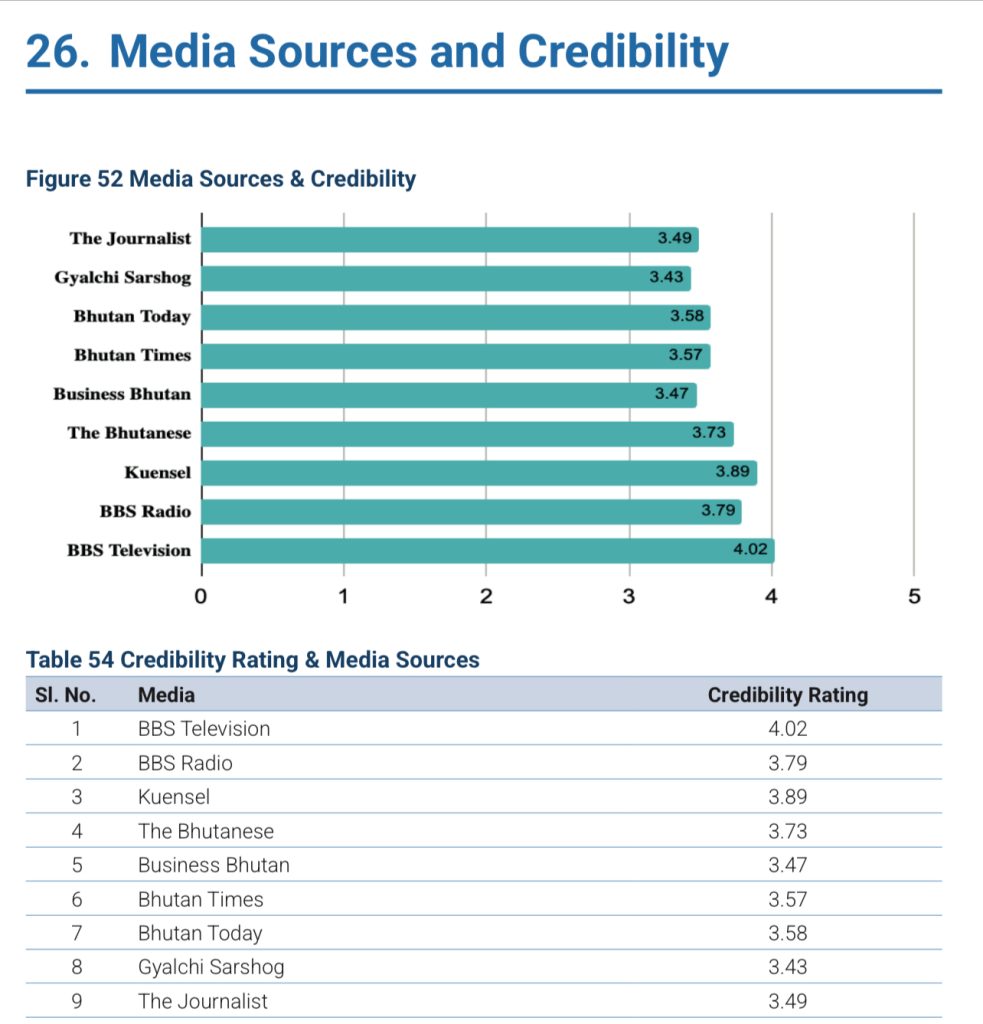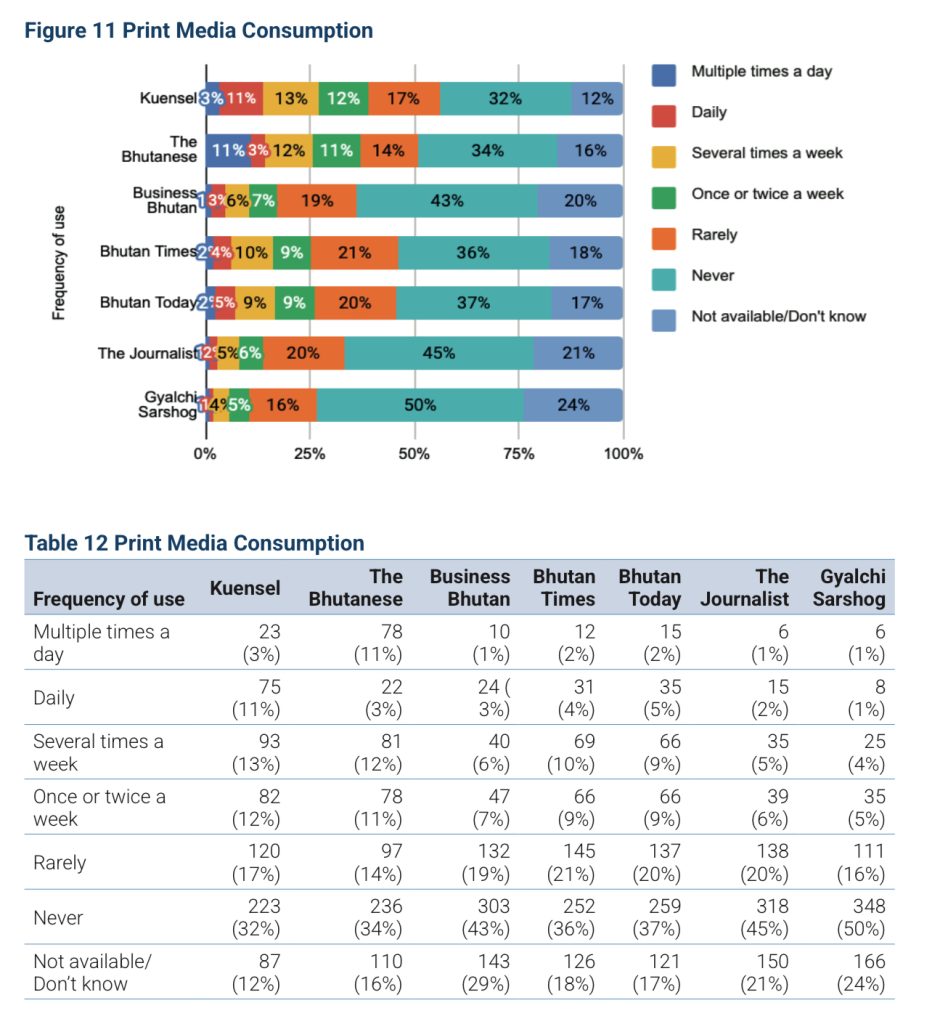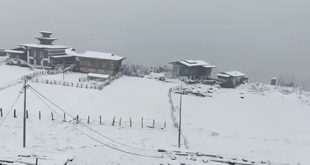The Media Perception Index (MPI) survey 2025, has revealed a nuanced and evolving media landscape in Bhutan, characterized by high public trust in traditional outlets alongside a rapid digital transformation where social media is now the dominant source of information.
This first-ever comprehensive citizen survey, supported by the Department of Media, Creative Industry and Intellectual Property (DoMCIIP) and conducted by the Journalists’ Association of Bhutan (JAB), offers critical insights into how Bhutanese citizens engage with and perceive their media.
The MPI survey, which covered 703 respondents across 14 dzongkhags, found that Bhutanese media generally enjoys relatively high levels of public trust, with an average perception score of 3.81 out of 5.
The questions from the survey to the 703 respondents were almost all quantitative in nature. Quantitative questions are those where people give their numerical preference or rankings with no analysis. The analysis part was mainly done by the Center for Local Governance consultancy partners, and Journalists’ Association of Bhutan.
When it comes to top three preferred media in Bhutan, BBS TV was ranked first, Kuensel was ranked second and The Bhutanese was ranked third.
When it comes credibility BBS TV scored 4.02, BBS Radio got 3.79, Kuensel got 3.89 and The Bhutanese got 3.73.
Business Bhutan got 3.47, Bhutan Times got 3.57, Bhutan Today at 3.58, Gyalchi Sarshog at 3.43 and The Journalist at 3.49.

BBS TV emerged as the most widely consumed and trusted media platforms, with over 60% of respondents engaging with BBS TV on a weekly or more frequent basis.
This reaffirms its central role as the national broadcaster, providing news and programming in Dzongkha and English. Similarly, for the most trusted and authoritive source of news in the country, BBS Radio maintains a strong position with a credibility rating of 3.79.
Newspaper readership in Bhutan demonstrated considerable variation across different publications. Kuensel emerged as the most widely accessed newspaper, with 39% of respondents reporting weekly readership. However, 32% indicated they never read this publication.
The Bhutanese showed the most dedicated readership, with 11% reporting that they read it multiple times a day, 3% daily, 12% several times a week and 11% one or twice a week. Conversely, 34% of respondents stated they never read The Bhutanese.

Mid-tier engagement was observed for Business Bhutan, Bhutan Times, and Bhutan Today, which recorded weekly readership rates ranging from 20% to 30%. These publications also experienced relatively high non-readership, with rates between 36% and 43%.
In contrast, The Journalist and Gyalchi Sarshog had the lowest reach, with only 1-2% of respondents reporting daily readership, and nearly 50% indicating they never read these publications.
However, the traditional trust coexists with a significant digital shift.
The survey highlighted that social media has become the dominant information source for many Bhutanese, surpassing traditional formats like print and television.
As of January 2025, Bhutan had approximately 470,000 social media users, representing over 59% of the total population, with about 90% of the population active on at least one platform. Platforms like WhatsApp and Telegram was observed as a pivotal messaging services, with high user bases and daily engagement.
YouTube is also widely used, though more as a destination for specific content than for constant interaction. TikTok shows deeply engaged users among its audience.
Despite its widespread use, trust in social media for news remains notably low, with an average trustworthiness rating of just 2.76, reflecting a substantial gap between popularity and perceived credibility.
General online websites also scored low in trustworthiness (2.79). This highlights concerns over misinformation, media bias, and limited independence that surfaced as recurring issues. In contrast, foreign media sources, particularly Indian television, were met with significant skepticism (2.42 trust rating).
The digital transition has brought challenges for traditional media. Radio usage has significantly declined, with 52% of respondents reporting they never listen to BBS Radio, and even higher non-usage rates for other FM stations.
Newspaper readership also varies, with Kuensel and The Bhutanese maintaining stronger bases, while others like Gyalchi Sarshog and The Journalist struggle with low reach and recognition (50% never read it).
The national OTT platform, Samuh, also shows limited reach, with 59% never using it.
The survey also underscored the media’s powerful role in shaping language use, cultural expression, and behavior, with more than half of respondents acknowledging this influence. This influence is particularly noticeable among youth, raising concerns about the dilution of traditional Bhutanese values and the adoption of new ones.
Concerns are also high among parents regarding children’s widespread mobile and internet access, citing risks like eye strain, negative behavioral influences, addiction, poor academic performance, and exposure to inappropriate content or misinformation.
Looking ahead, the public calls for enhanced accuracy, independence, and diversified content in Bhutanese media.
This survey comes as Bhutan’s press freedom ranking has seen a significant decline, falling from 33rd in 2021 to 152nd globally in 2025, according to Reporters Without Borders (RSF), emphasizing the urgent need for reforms.
The MPI survey states that Bhutan stands at a critical juncture in its media development. While traditional platforms still anchor public trust, the rapid shift towards digital engagement necessitates strategic reforms, including strengthening media and digital literacy, promoting culturally grounded content, and establishing regulatory frameworks to counter misinformation and foster independent media.
 The Bhutanese Leading the way.
The Bhutanese Leading the way.




